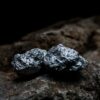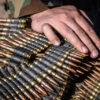Scientists from the Tokyo University of Science have revealed a stable and effective lithium-ion conductor that could produce substantial change in the solid-state battery market.
Revealed on Wednesday, the recent discovery of a pyrochlore-type oxyfluoride material aims to overcome the safety and performance issues present in current lithium-ion batteries.
In contrast to batteries with traditional liquid electrolytes, all-solid-state lithium-ion batteries featuring solid electrolytes are non-flammable and offer higher energy density and transference numbers.
Yet, the main challenges with existing solid electrolytes include their lower Li-ion conductivity and the difficulty in achieving sufficient contact between the electrode and the solid electrolyte.
This new material also enhances safety features. Its high stability and non-flammable nature make it suitable for critical environments like airplanes. Additionally, its ability to function at high temperatures and support rapid recharging makes it a promising candidate for electric vehicles, home appliances, and medical devices.
The research and development team at the university is led by Professor Kenjiro Fujimoto, Professor Akihisa Aimi, and Dr. Shuhei Yoshida from Denso Corporation.
“We have discovered an oxide solid electrolyte that is a key component of all-solid-state lithium-ion batteries, which have both high energy density and safety,” Fujimoto said. “In addition to being stable in air, the material exhibits higher ionic conductivity than previously reported oxide solid electrolytes.”
This discovery’s potential impact goes beyond immediate applications. The material marks a significant leap towards creating revolutionary batteries capable of operating across a broad temperature spectrum, from low to high. It also paves new paths for research and development in the all-solid-state battery field.
Scientists from #TUS have discovered a #Stable #HighConductivity #Pyrochlore type #Oxyfluoride as a #SolidElectrolyte for #SolidState #LiIonBatteries with improved #EnergyDensity and #Safety, as published in @ChemMater
— Tokyo University of Science (TUS) (@TUS_PR_en) April 2, 2024
Read more: Lithium South Development updates leadership roster, appoints new director
New lithium-ion conductivity is stronger than known oxide solids
In a study published in Chemistry of Materials in late March, the research team published about a stable and highly conductive Li-ion conductor as a pyrochlore-type oxyfluoride.
The pyrochlore-type oxyfluoride studied in this work underwent structural and compositional analysis using various techniques, including X-ray diffraction, Rietveld analysis, inductively coupled plasma optical emission spectrometry, and selected-area electron diffraction.
“Making all-solid-state lithium-ion secondary batteries has been a long-held dream of many battery researchers,” Fujimoto said.
“We have discovered an oxide solid electrolyte that is a key component of all-solid-state lithium-ion batteries, which have both high energy density and safety. In addition to being stable in air, the material exhibits higher ionic conductivity than previously reported oxide solid electrolytes.”
The team developed a specific material called Li1.25La0.58Nb2O6F, which showed a high level of ionic conductivity. Specifically, it measured 7.0 millisiemens per centimeter (mS/cm) at room temperature inside the material and 3.9 mS/cm overall.
A millisiemen is a unit of measurement for electrical conductivity, or how well a material can carry an electric current.
Researchers found its lithium-ion conductivity to be higher than that of known oxide solid electrolytes. This material exhibits an extremely low activation energy for ionic conduction. At low temperatures, its ionic conductivity ranks among the highest of known solid electrolytes, surpassing even sulfide-based materials.
Conversely, the new material maintains the same conductivity as conventional oxide-based solid electrolytes at room temperature, even at –10°C.
Additionally, its conductivity has been confirmed above 100°C, extending its operating range from –10°C to 100°C. Conventional lithium-ion batteries fail to function at temperatures below freezing. This limits the operating conditions for commonly used devices like mobile phones to 0°C to 45°C.
Read more: CleanTech Lithium direct lithium extraction plant in Chile starts operations
Read more: State regulations slow federal momentum to produce lithium
No risks of electrolyte leakage from damage
Beyond performance at temperature extremes, the new material addresses safety related issues surrounding lithium ion batteries.
Oxide-based all solid-state batteries, unlike current lithium-ion secondary batteries, carry no risk of electrolyte leakage from damage or toxic gas production like sulfide-based batteries. Thus, experts expect this new innovation to lead future research.
“The newly discovered material is safe and exhibits higher ionic conductivity than previously reported oxide-based solid electrolytes,” Fujimoto said. “The application of this material is promising for the development of revolutionary batteries that can operate in a wide range of temperatures, from low to high.
“We believe that the performance required for the application of solid electrolytes for electric vehicles is satisfied.”
The new material also will not catch fire if damaged, making it ideal for airplanes and other safety-critical areas. It also fits high-capacity needs, such as in electric vehicles, because it withstands high temperatures and enables rapid recharging. Additionally, its potential for miniaturizing batteries makes it promising for home appliances and medical devices.
.
Follow Joseph Morton on Twitter
joseph@mugglehead.com














